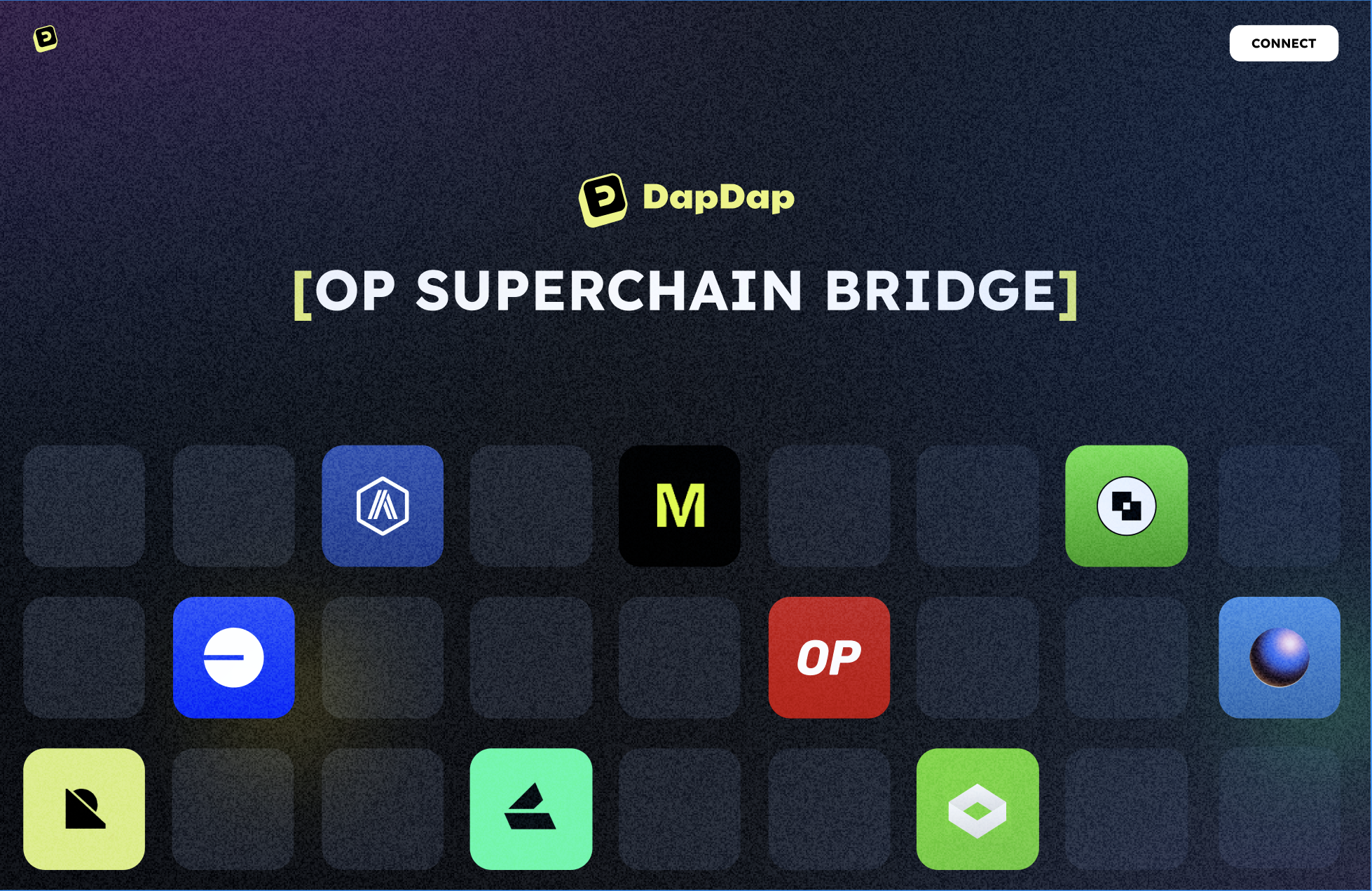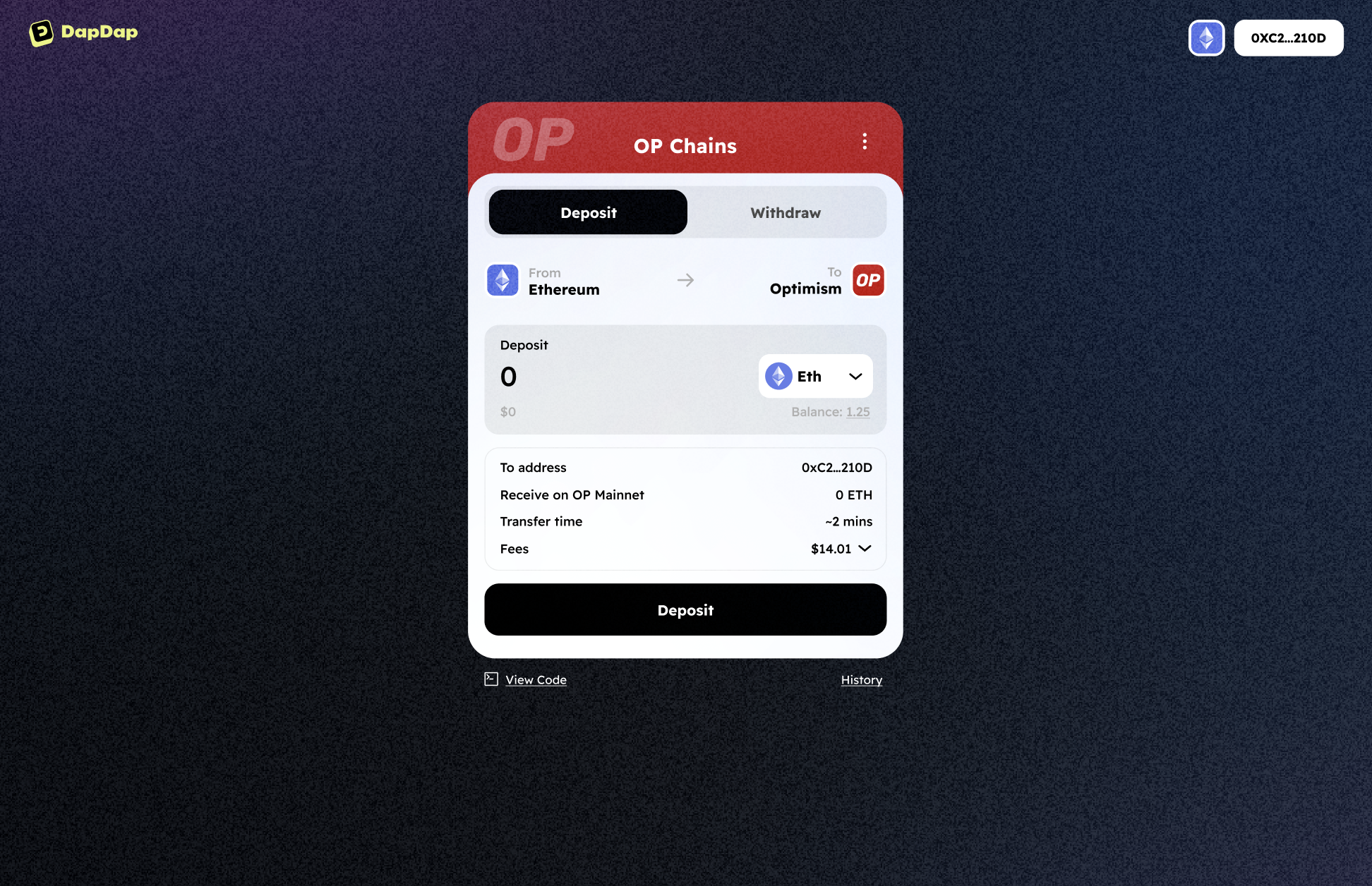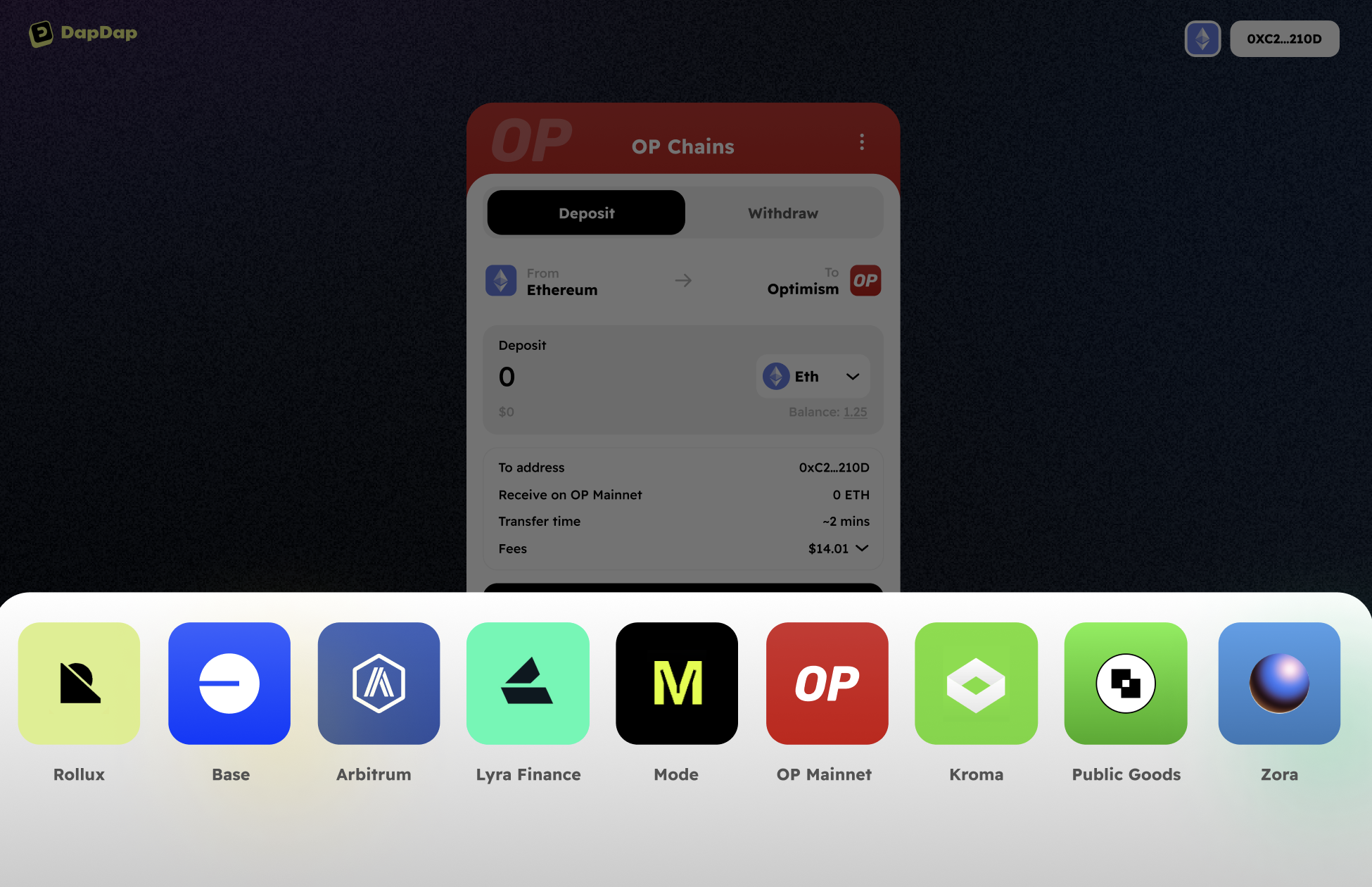Great RFP! Two additional requirements that would be great to add:
- Ability for a user or app to create a link that points to a specific network on the bridge (e.g. bridge.org/base)
- Ability for a user or app to create a link that points to a specific token on a specific network on the bridge (e.g. bridge.org/base/USDC).
These options would allow us this community built bridge to be a viable option for fully replacing the Base bridge. Thanks!



Foundation Mission Request – Superchain Bridge RFP
To take on this project, submit a proposal to this thread by December 15. Read more about Missions here.
How will this Foundation Mission (RFP) will help accomplish the above Intent?
This RFP introduces a Superchain Bridge interface which acts as the foundation for users to move tokens to / from any OP Chain in the Superchain using the canonical standard bridge in the OP Stack.
Optimism is leaning on its ecosystem to bootstrap access to the protocol. Not running our own frontend increases censorship resistance and decentralization, but also helps us bootstrap a distributed ecosystem.
As such, this mission will contribute to a more resilient bridging ecosystem for the Superchain.
What is required to execute this Foundation Mission (RFP)?
The Superchain Bridge Interface allows users to bridge to / from any OP Chain in the Superchain from L1 Ethereum using the standard bridge. Once the MVP of low latency L2 to L2 message passing is live (est. mid 2024), the Superchain Bridge interface should also allow users to bridge between OP Chains.
Completing this RFP requires building an open source frontend that allows users to bridge to / from any OP Chain in the Superchain. The frontend should be fully open-source and should allow for future iterations of the functionality. This RFP requires both designs and implementation.
For this RFP, the Optimism Foundation will accept up to two submissions. Multiple frontends will maximize the likelihood of success and improve the resilience of the system.
The target grant reward for each submission will be 200k OP. Teams should discuss the solution criteria below with the Foundation, and may arrive at a different mutually agreeable grant amount dependent on the scope of their work.
Solution Criteria:
Core functionality of the Superchain Bridge interface:
Wallet connection
Token bridges
Token lists
3rd party bridges
Account history
Query parameters
Block explorer
i18n
Compliance The Superchain Bridge Interface should include an appropriate user legal agreement and risk disclosures, which will be subject to evaluation and confirmation by the Foundation. The Superchain Bridge Interface should also implement appropriate compliance measures to prevent it from being used in violation of applicable laws. The compliance measures implemented by a grantee will be subject to evaluation and confirmation by the Foundation. Prior agreed compliance costs incurred by the grantee will be reimbursed by the Foundation for at least one year following launch.
Superchain Registry The Superchain Bridge Interface should only include OP Chains in the Superchain and update to include new OP Chains as they come online.
The user interface must use the Superchain Registry and relevant CCTP bridges to determine the canonical bridges that are supported. Furthermore, the UI should provide instructions for how the user can verify using their wallet that they are interacting with the canonical bridge for the respective OP Chain.
Service level agreement The bridge interface should continue to support adding new OP Chains as they come online. To ensure this happen, the RFP proposer must agree to a service level agreement that governs the ongoing maintenance, support, and enhancement of the Bridge UI, including but not limited to the addition of new operation chains, bug fixes, updates, and improvements as outlined in the RFP. Past the 1 year service agreement, through Optimism’s Retroactive Public Goods Funding, we expect interface maintainers will be rewarded based on the reliability of the interface.
How should the Foundation measure progress towards this Foundation Mission (RFP)?
Progress can be measured based upon the completion of the following milestones:
These milestones mark the completion of the proposal.
How should RetroPGF badgeholders measure impact upon completion of this Foundation Mission (RFP)?
Application instructions
To apply for this RFP, please complete the form in the expandable section below and leave your response as a comment on this issue thread below. Submissions will be open until Dec 15, at which time the Foundation will review all submissions and select up to three individuals/teams to complete the work defined here.
Submission form
_Copy the entire application below and leave a comment on this issue with your answers completed. A representative from the Optimism Foundation may reach out using the contact info provided to request more information as necessary._ ## Foundation Mission (RFP) Application **Please verify that you meet the qualifications for submitting at the above [Tier](https://gov.optimism.io/t/collective-trust-tiers/5877/2)** * **Alliance Lead:** Please specify the best point of contact for your team * **Contact info:** * **L2 recipient address:** * **Please list the members of your Alliance and link to any previous work:** Read more about Alliances [here](https://gov.optimism.io/t/season-4-alliance-guide/5873) --- **What makes your Alliance best-suited to execute this Mission?** - [...] - [...] **Please describe your proposed solution based on the above Solution Criteria (if applicable):** - [...] - [...] **Please outline your step-by-step plan to execute this Mission, including expected deadlines to complete each peice of work:** - [...] - [...] **Please define the [critical milestone(s)](https://gov.optimism.io/t/grant-policies/5833) that should be used to determine whether you’ve executed on this proposal:** - [...] - [...] **Please list any additional support your team would require to execute this mission (financial, technical, etc.):** - [...] - [...] **Grants are awarded in OP, locked for one year. Please let us know if access to upfront capital is a barrier to completing your Mission and you would like to be considered for a small upfront cash grant:** _(Note: there is no guarantee that approved Missions will receive up-front cash grants.)_ - [...] Please check the following to make sure you understand the terms of the Optimism Foundation RFP program: - [ ] I understand my grant for completing this RFP will be locked for one year from the date of proposal acceptance. - [ ] I understand that I will be required to provide additional KYC information to the Optimism Foundation to receive this grant - [ ] I understand my locked grant may be clawed back for failure to execute on critical milestones, as outlined in the [Operating Manual](https://github.com/ethereum-optimism/OPerating-manual/blob/main/manual.md#valid-proposal-types) - [ ] I confirm that I have read and understand the [grant policies](https://gov.optimism.io/t/token-house-grant-policies/5833) - [ ] I understand that I will be expected to following the public grant reporting requirements outlined [here](https://gov.optimism.io/t/suggested-public-reporting-requirements-for-grantees/4176) -- end of application -- ---